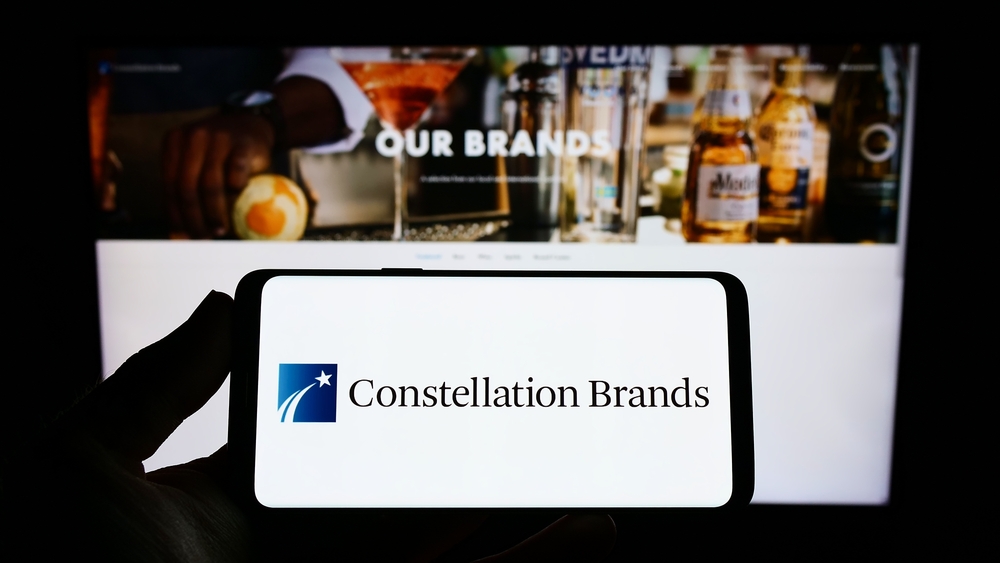
Constellation Brands (STZ), which sells Corona and Modelo beers, generated lower sales but maintained its free cash flow guidance. STZ stock is down from its highs. Based on its historical averages, it appears to be a bargain. What is the best way to play this?
STZ is at $171.26 today, well off its recent peak of $195.62 on May 16. Nevertheless, value investors like the stock as the beer, wine, and spirits company is still profitable and trading at attractive buy-in levels.

Lower Sales But Strong FCF
On July 1, Constellation Brands reported that its fiscal Q1 2026 sales fell 6% YoY for the quarter ending May 31, 2025. That was driven by a 2% fall in beer sales (89% of sales) and a 28% drop in wine and spirits.
Analysts had already been expecting a decline, but this was still lower by over -$40.8 million than expectations, according to Seeking Alpha. That decline (and expectations of it) undoubtedly led to STZ's faltering over the last 2 months.
Nevertheless, its free cash flow (FCF) was very strong at $444 million, a 41% YoY increase. This was despite a 6% decrease in operating cash flow (capex was lower due to the timing of brewery investments and capex spending).

As a result, Constellation said its guidance for the full year is between $1.5 billion and $1.6 billion in free cash flow. That can be seen in the table above from page 34 of its presentation deck.
In effect, we can project $1.55 billion in FCF, or about 16.4% of forecast sales of $9.46 billion for the year ending Feb. 2026. That could lead to a significantly higher stock price.
Price Target Based on FCF Yield
One way to value STZ stock is to assume that 100% of its FCF is paid out in dividends. What would the dividend yield be if that happened? Using that yield, we can estimate its future market value and potential upside.
Right now, the dividend per share (DPS) is $4.08 annually, $1.02 paid quarterly. So the dividend yield is 2.38% (i.e., $4.08/$171.26). We can use that to estimate the FCF yield.
Here's how. Since its dividend cost $182.2 million in Q1, or $728.8 million annually, the annual cost is 47% of the estimated $1.55 billion in forecasted annual FCF (see above).
In other words, the FCF yield should be 4.49% (i.e., 2.38% DY / (1-47%) = 2.38% x 1.887 = 4.49%.
Therefore, the future market cap can be estimated to be as follows:
$1.55 billion FCF / 0.0449 = $34.52 billion market cap
That is 14.5% higher than today's market cap of $30.15 billion, according to Yahoo! Finance. In other words, STZ stock is worth 14.5% more based on its FCF guidance and FCF yield:
$171.26 x 1.145 = $196.09 target price
Price / Earnings Target Price
Analysts project earnings per share (EPS) this year of $12.66 and next year at $13.74. So the next 12 months (NTM) run rate is $12.94 (weighting the 2026 figure by 75%).
Morningstar reports that the average forward price/earnings (P/E) multiple has been 18.07x over the last 5 years. But Seeking Alpha says it has been lower at just 13.61x. That puts its average forward P/E multiple at 15.84x.
Therefore, we can estimate its price target at:
$12.94 x 15.84x = $204.97 per share
But, to be conservative, using the lower 13.61x multiple, the target price is at $176.11 per share.
Dividend Yield Target Price
The average dividend yield over the last 5 years has been 1.44% according to Morningstar. But Yahoo! Finance says it's been 1.49%, and Seeking Alpha reports 1.35%.
So, using the average historical yield of 1.427%, we can estimate STZ's stock price if it reverts to an average historical dividend yield. Here's how: take its present dividend per share (DPS) and divide it by the average historical yield:
$4.08 DPS / 0.01427 = $285.92 target price
Summary of Price Targets
Therefore, let's compute the average of these three price targets:
FCY Yield price …………… $196.09
P/E price …………………….. $176.11
Dividend Yield price …… $285.92
Average price target …… $219.37 per share
That is +28% over today's price of $171.26. Note that this is highly skewed by the much higher dividend yield target. But even using the average of the first two price targets (i.e., $186.10) shows that STZ is at least 8.7% undervalued.
The bottom line is that STZ looks to be a bargain here. Analysts tend to agree. For example, Yahoo! Finance shows that the average of 26 analysts is $210.29. Similarly, Barchart's survey target is $205.04, and Stock Analysis says 18 analysts have an average price target of $212.83.
AnaChart.com, which tracks recent analyst write-ups, shows that 24 analysts have an average price of $214.94. That is close to my price target of $219.37.
All in all, STZ looks like it has good upside here. But, given the stock's volatility, what is the best way to play it right now?
Shorting OTM Puts Works
One way to set a lower buy-in price and get paid while waiting is to sell short out-of-the-money put options.
For example, the Aug. 8 expiry period shows that the $165 strike price put option has a premium of $2.78 per put contract. This strike is 3.7% lower than today's price but provides an immediate yield of 1.685% (i.e., $2.78/$165.00).

If an investor can repeat this trade for 3 months, the expected return is over 5.0% (i.e., 1.685% x 3 = 5.055%). There is no guarantee this yield can be achieved each month.
For more risk-averse investors, the $160 strike shows a midpoint premium of $1.88, or a short-put yield of 1.175% over the next month.
The point is that this is a way to set a lower potential buy-in point, should STZ fall to these strike prices. And don't forget the breakeven point is lower, due to the income already received.
For example, the $165 strike price play has a breakeven point of $162.22 (i.e., $165-$2.78), which is over 5% lower than today's trading price.
The bottom line is that STZ looks cheap here, and shorting OTM puts is a way to profitably play it.
On the date of publication, Mark R. Hake, CFA did not have (either directly or indirectly) positions in any of the securities mentioned in this article. All information and data in this article is solely for informational purposes. For more information please view the Barchart Disclosure Policy here.






